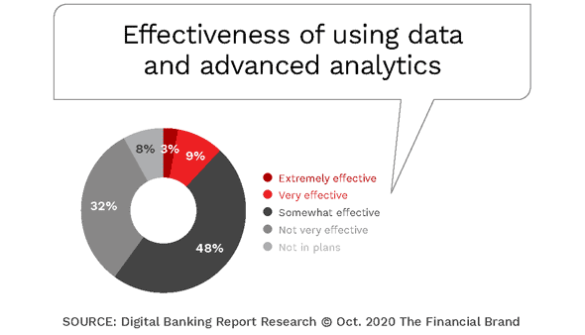India needs IoT security standards

The bigger issue is most of the sectors using digital technologies or
integrating emerging technologies do not have a digital risk element defined
by the sectoral regulators till date. A lack of National cyber strategy
highlighting the key risk to these sectors is still awaiting cabinet nod.
Hence, fighting ransomware, advanced persistent threats and malware is
becoming tough for the industry, which doesn’t have a framework to rely upon
to test or audit their systems. Earlier this year, the European body, ETSI,
released consumer IoT security standard. The standard specifies high-level
security and data protection provisions for consumer IoT devices which
includes IoT gateways, base stations and hubs, smart cameras, TV, smart
washing machines, wearables, health trackers, home automation systems,
connected gateways, refrigerators, door lock and window sensors. This standard
provides a minimum baseline for securing devices and sets provisions for
consumer IoT. It lays the foundation for setting strong password controls for
IoT devices by stating all consumer IoT device passwords must be unique. In
India, and across the world, we see consumer IoT devices getting sold with
universal default usernames and passwords.
How To Build Your Own Chatbot Using Deep Learning

Before jumping into the coding section, first, we need to understand some
design concepts. Since we are going to develop a deep learning based model, we
need data to train our model. But we are not going to gather or download any
large dataset since this is a simple chatbot. We can just create our own
dataset in order to train the model. To create this dataset, we need to
understand what are the intents that we are going to train. An “intent” is the
intention of the user interacting with a chatbot or the intention behind each
message that the chatbot receives from a particular user. According to the
domain that you are developing a chatbot solution, these intents may vary from
one chatbot solution to another. Therefore it is important to understand the
right intents for your chatbot with relevance to the domain that you are going
to work with. Then why it needs to define these intents? That’s a very
important point to understand. In order to answer questions, search from
domain knowledge base and perform various other tasks to continue
conversations with the user, your chatbot really needs to understand what the
users say or what they intend to do. That’s why your chatbot needs to
understand intents behind the user messages (to identify user’s intention).
Finnish government rolls out digital projects to support SMEs

Finland’s plan aims to use the EDIH-model to strengthen the digital
capabilities of companies across the country. The central strategy is based
on helping Finnish SME enterprises to easily access, exploit and profit from
the more extensive use of business impacting technologies such as artificial
intelligence (AI), robotics and high-performance computing. The design
constriction of the Finnish NDIH plan means it can link directly in to the
EU’s EDIH knowledge base and network. The prospective Finnish hubs will have
the built-in ability to accelerate the digital transformation not just in
Finland but also on a wider EU level. Earlier this year, the Finnish
government rolled-out an open survey scheme to measure interest from the
country’s technology sector in these network projects. The survey was
designed to help determine which Finnish tech actors may be qualified to
join the hubs. The results from the information survey will amplify the
Finnish government ministry’s ability to develop a national framework.
Moreover, it will allow it to organise and complete an application round for
Finland’s candidates to the Eurpean-wide hub by year-end 2020.
Data Privacy is a Brand Reputation Issue, Not a Compliance Issue

First, establish a privacy policy that is legal and ethical. Then, communicate
the privacy and data utilization policy clearly without all the obfuscating
legalese. Demonstrate that consumer data will be collected only by honest and
clear, not coercive, or deceptive consent. Next, create personal data pods for
consumers on their own devices, so they can download and control their data
easily in a usable, structured format instantly. Ask consumers if the brand
can use non-invasive Edge AI tools to provide them with learnings and key
insights into themselves that improve their lives without violating their
desires or values. Use those insights to generate predictions and
recommendations that enhance the consumer’s life, that serve their best
interests, and are delivered with emotionally intelligent humanity.
Continuously seek, and embrace, candid consumer feedback on the actual value
being created. Then, as real value is generated for the consumer using their
available data, and the consumer’s trust increases, open up an honest and
fiduciary dialogue about what additional data is needed in order to create
even more personalized value. As more and more data is accumulated from the
more trusting consumers, such as location, browsing, and other real-time data,
reach out to the hesitant consumers and share use cases.
What Are The Fastest Growing Cybersecurity Skills In 2021?

Cybersecurity professionals with cloud security skills can gain a $15,025
salary premium by capitalizing on strong market demand for their skills in
2021. DevOps and Application Development Security professionals can
expect to earn a $12,266 salary premium based on their unique, in-demand
skills. 413,687 job postings for Health Information Security professionals
were posted between October 2019 to September 2020, leading all skill areas in
demand. Cybersecurity's fastest-growing skill areas reflect the high
priority organizations place on building secure digital infrastructures that
can scale. Application Development Security and Cloud Security are far and
away from the fastest-growing skill areas in cybersecurity, with projected
5-year growth of 164% and 115%, respectively. This underscores the shift from
retroactive security strategies to proactive security strategies. According to
The U.S. Bureau of Labor Statistics' Information Security Analyst's Outlook,
cybersecurity jobs are among the fastest-growing career areas nationally. The
BLS predicts cybersecurity jobs will grow 31% through 2029, over seven times
faster than the national average job growth of 4%.
Q&A on the Book Accelerating Software Quality
There are multiple challenges that can be divided across test automation
creation and maintenance, test reporting and analysis, test management,
testing trends, and debugging. Traditional tools are not efficient enough to
provide practitioners with reliable, robust, and maintainable test scripts.
Test automation scripts keep breaking upon developers’ code changes made to
the apps, or elements on the app that aren’t properly recognized by the test
automation framework. Ongoing maintenance of scripts is also a challenge that
causes lots of false negatives and noise that drills into the CI pipeline. As
test execution scales, large test data accumulates and needs to be sliced and
diced to find the most relevant issues. Here, traditional tools are limited in
filtering big test data and providing data-driven smart decisions, trends,
root cause of failures, and more. Lastly, the time it takes to create a new
script that is code based, and debug it, is way too long to fit into today’s
aggressive timelines. Hence, AI and ML are in a great position to close this
gap by automatically generating test code and maintaining it through
self-healing methods.
How three simple steps will help you save on your cloud spending

The first crucial step is to get hold of the data in a format that will help
you understand how money is being spent. This will allow you to put guard
rails up to protect against overspending. To do this, you’ll need to utilise
tools that break down the usage data. Otherwise, you will just receive a bill
that looks like a long shopping list – that is almost impossible to
decipher. AWS does offer tools that can help here, but you can also add
third party solutions like CloudCheckr to collate this information and play it
back to you, with actionable metrics. This will also alert you to any under
used resources that could be turned off. You will also want to ensure you
implement a consistent tagging strategy across all of your cloud estate. This
will allow you to break spending down to the individual customer, department,
team and even developer. It will also help you understand where you’re getting
a good return on investment and where you might need to be more efficient.
It’s essential that you go native in public cloud infrastructures – otherwise
you will miss key features that allow you to automate and orchestrate. For
example, you should be taking advantage of features that will automate day to
day management tasks, such as software updates and back-ups.
Banking Must Reduce AI Talent Gap for Digital Transformation Success

Using outside talent to improve productivity and results with data and AI
technology is definitely a valid path in the short-run, especially as most
banks and credit unions play catch-up in the race to leverage data insights
across the organization. But, as mentioned, the ability to deploy the insights
to specific product and service needs requires the experience of those who
have known the business for years. Without the involvement of the users of the
data and AI results, technology is deployed in a vacuum. Marketing managers
need to understand the targeting and personalization methodology the models
create. Product managers must understand the changes to processes and
procedures that is recommended by AI technologies to ensure all of the
required steps are in place for compliance purposes. And, risk managers need
to feel comfortable that the assumptions made by models continue to reflect
the cybersecurity requirements of the organization. The need to upgrade the
skills of the consumers of data and AI solutions usually is done by training
existing employees of the organization. This is usually a much more efficient
and less disruptive process than trying to train technology people the
internal intricacies of an organization.
Tackling multicloud deployments with intelligent cloud management

Looking at what the public cloud providers offer in terms of a control plane
for managing workloads, McQuire says Azure focuses on hybrid to edge and
on-premise workload management. “Google Cloud has been a latecomer in the
enterprise and going full board with cloud management,” he adds. For the
moment, says McQuire, the focus is on orchestration and control, security and
governance. He says this is a reflection of where IT organisations are in
terms of how they are using multiple public clouds. “There is a need to
understand the economic impact of moving workloads around,” he says. “Not only
do you have a need to understand the performance of different IT environments,
whether to deploy on-premise, in a private cloud or use one of the three
public clouds, there is also a requirement to understand the economics
associated with those decisions.” It is now not uncommon for IT
decision-makers to standardise on one public cloud for specialist workloads
such as artificial intelligence (AI), and use another for infrastructure as a
service (IaaS). McQuire adds: “Two years ago, companies started running
machine learning workloads with a single cloud provider. ..."
How Service Mesh Enables a Zero-Trust Network

To safeguard user data, organizations are adopting a zero-trust security model.
“Zero trust security means that we’re not trusting anybody,” said Palladino. “We
don’t trust our own services. We don’t trust our own team members.” Placing too
much trust in users, services and teams could cause a catastrophic failure. And,
“there is no bigger risk than thinking you are secure, while in reality, you are
not,” he said. ... Implementing these permissions is where a service mesh comes
in. The application teams often build security, yet it’s generally bad practice
to build your own cybersecurity. Security for microservices requires high
expertise, and standardizing connectivity between various microservices can
easily result in fragmented security implementations. Instead of building your
own security infrastructure, Palladino recommended utilizing service mesh. By
using service mesh as a control plane for microservices, platform architects can
specify specific rules and attributes to generate an identity on a per-service
basis. Service mesh also removes the burden of networking from developers,
enabling them to focus more on their core logic. “Application teams become
consumers of connectivity, as opposed to the makers to this connectivity,”
Palladino noted.
Quote for the day:
"You can't use up creativity. The more you use, the more you have." -- Maya Angelou
No comments:
Post a Comment